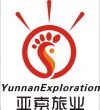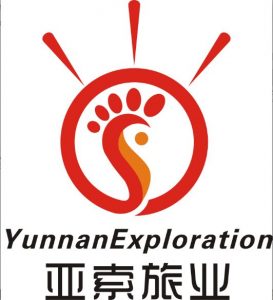
Nanxihe River in Honghe and Wenshan
Chinese Name:南溪河
English Name: Nanxihe River in Honghe and Wenshan
Nanxi River originates from Mingjiu Town in the eastern part of Mengzi County, Yunnan Province. Initially known as the Beixi River in its upper reaches, it becomes the Nanxi River after passing through the Zhuangzhai Reservoir in Zhicun Town. It is a secondary tributary of the Honghe River system and covers approximately 60 square kilometers in the southeastern part of Honghe Hani and Yi Autonomous Prefecture, and the southwestern part of Wenshan Zhuang and Miao Autonomous Prefecture.
From Zhicun Town onwards, the Nanxi River runs parallel to the Kunming-Hekou Railway. It eventually joins the Honghe River in Yao Autonomous County of Hekou, with more than 20 tributaries including the names such as Nanguo River.
Historical Evolution
Due to its strategic location as a frontier fortress, the area has been established as a county, district, and special administrative region since the Eastern Han Dynasty (25–220 AD). It has been heavily defended with troops throughout successive dynasties, boasting a long history and a proud tradition of ethnic struggles. In 1885, under the leadership of Miao leader Xiang Chongzhou, the local people fiercely repelled French aggressors invading from Maguan to Bantou with spears and swords, defending the sacred territory of their homeland. In 1908, at the command of Sun Yat-sen, Huang Xing and others launched the famous “Hekou Uprising” here. During the War of Liberation, Yao and Miao people united to attack the Kuomintang forces, dealing them a heavy blow. During the self-defense counterattacks against Vietnam, people from all ethnic groups in Hekou responded actively to the calls of the party and government, making significant contributions.
Natural Resources
There are nearly 10 scenic spots along the Nanxi River, large and small, including places like Yuan Shidong, the Wujiazhai Man Bridge on the Yunnan-Vietnam Railway, Lianhua Cave Stone Carvings, Dawei Mountain National Nature Reserve, Huayu Cave National Forest Park, and Nanxi River Rafting, most of which are underdeveloped or awaiting development, with low tourist traffic and abundant natural beauty. Located at the junction of China and Vietnam, the magnificent Nanxi River Bridge spans two bridges: the Yunnan-Vietnam Railway Bridge and the Yunnan-Vietnam Highway Bridge, serving as the only exit from Hekou.
The tropical primitive valley rainforest landscape along both banks of the Nanxi River benefits from its low altitude, hot climate, abundant rainfall, and rich forest resources. The area is known for its diverse flora and fauna, including river valleys, caves, and Yao ethnic customs, leading to the establishment of the Nanxi River Provincial Scenic Area. The tourism department has also opened up tourist routes from Hekou to places like Vietnam’s Old Street, Gantang, Gonglou, Hanoi, and Haiphong, where visitors can enjoy sightseeing tours to places like the Sino-Vietnamese Railway Bridge and Old Street in Hanoi, making it a scenic area for sightseeing, border trade shopping, biological research, and cross-border tourism.
Nanxi River Rafting
The 32-kilometer rafting journey on the Nanxi River can be divided into three sections: upper, middle, and lower. Starting from Niulang Beach, it passes through the Nanxi River Scenic Area. The upper section spans about five to six kilometers, characterized by swift currents and numerous dangerous and rapid shoals. The middle section is calm with flat waters, while the lower section, spanning eight to nine kilometers, marks the border between China and Vietnam, ending at the Hekou County Sino-Vietnam Bridge.
Geographical Environment
Named for its location at the confluence of the Honghe and Nanxi Rivers, Hekou County’s town faces Vietnam’s Old Street across the river. It serves as the southern gateway to Yunnan and is one of China’s key frontier towns. Due to its natural geographical conditions, the climate varies significantly within its borders. The highest temperature can reach 40.9°C, while the lowest can drop to 2.1°C. Summers are long with high humidity and abundant rainfall. The high-altitude areas are densely forested with valuable timber such as spruce, teak, and beautiful wood, home to rare birds and animals like tigers, leopards, bears, deer, silver pheasants, and golden monkeys. In the river valley areas, crops such as rice with two harvests per year, maize, soybeans, peanuts, rubber, pepper, cinnamon, bananas, pineapples, and other economic trees and fruits are cultivated. The area is renowned nationwide for its rubber production, with state-owned farms established here.

 7 Days GolfingTour
7 Days GolfingTour
 8 Days Group Tour
8 Days Group Tour
 8 Days Yunnan Tour
8 Days Yunnan Tour
 7 Days Shangri La Hiking
7 Days Shangri La Hiking
 11 Days Yunnan Tour
11 Days Yunnan Tour
 6 Days Yuanyang Terraces
6 Days Yuanyang Terraces
 11 Days Yunnan Tour
11 Days Yunnan Tour
 8 Days South Yunnan
8 Days South Yunnan
 7 Days Tea Tour
7 Days Tea Tour
 8 Days Muslim Tour
8 Days Muslim Tour
 12 Days Self-Driving
12 Days Self-Driving
 4 Days Haba Climbing
4 Days Haba Climbing
 Tiger Leaping Gorge
Tiger Leaping Gorge
 Stone Forest
Stone Forest
 Yunnan-Tibet
Yunnan-Tibet
 Hani Rice Terraces
Hani Rice Terraces
 Kunming
Kunming
 Lijiang
Lijiang
 Shangri-la
Shangri-la
 Dali
Dali
 XishuangBanna
XishuangBanna
 Honghe
Honghe
 Kunming
Kunming
 Lijiang
Lijiang
 Shangri-la
Shangri-la
 Yuanyang Rice Terraces
Yuanyang Rice Terraces
 Nujiang
Nujiang
 XishuangBanna
XishuangBanna
 Spring City Golf
Spring City Golf
 Snow Mountain Golf
Snow Mountain Golf
 Stone Mountain Golf
Stone Mountain Golf











